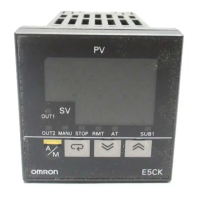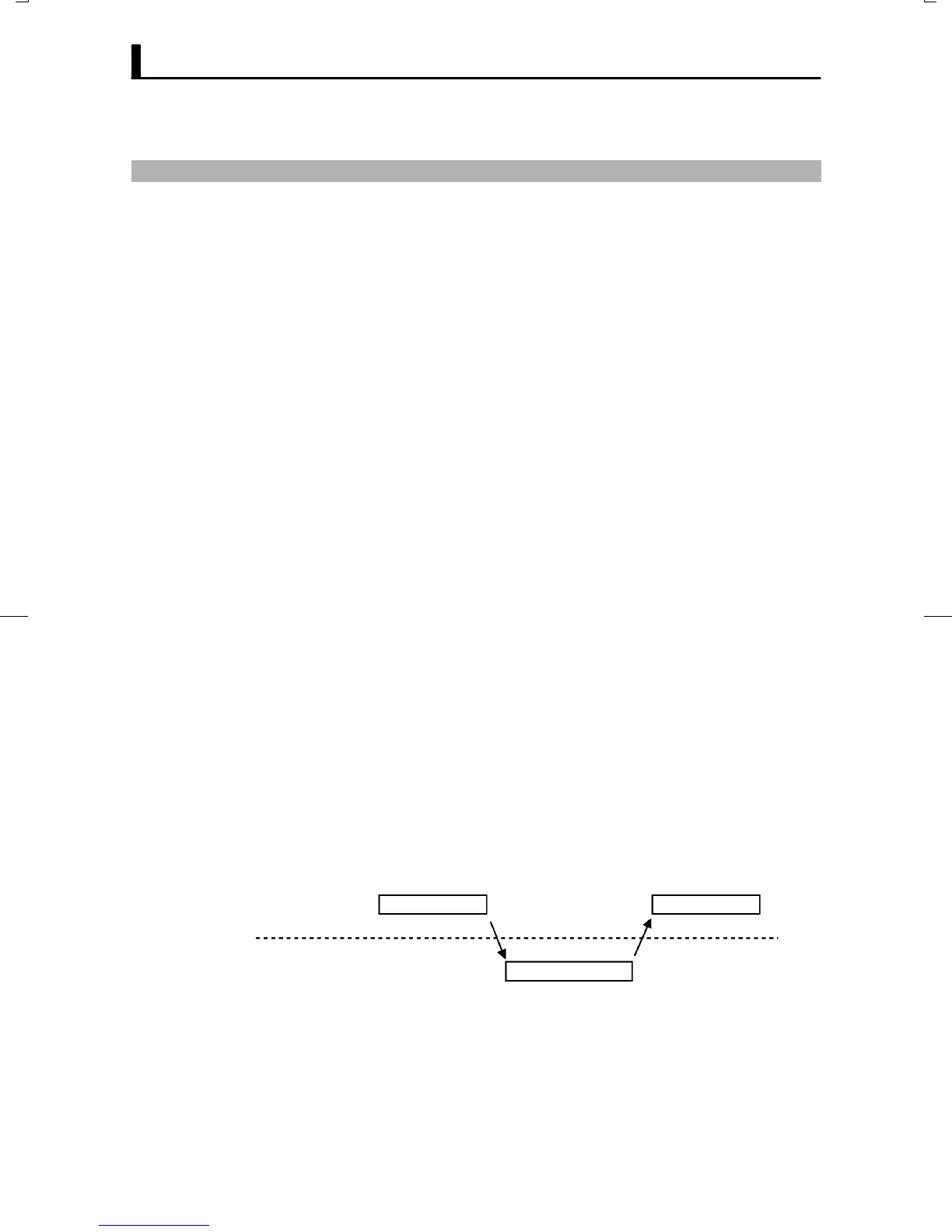CHAPTER 6 USING THE COMMUNICATIONS FUNCTION
E5CK
6–2
6.1 Outline of the Communications Function
The communications function allows you to monitor and set E5CKĆT paĆ
rameters by a program prepared and running on a host computer conĆ
nected to the E5CKĆT controller. This chapter describes operations as
viewed from the host computer.
When the communications function is used, the E53ĆCK01/03 commuĆ
nications unit must be added on.
The E5CKĆT communications function allows you to carry out the followĆ
ing:
Ă• Read/write parameters
Ă• Instruct operations
Ă• Select the setting level.
The communications function assumes the following conditions:
Ă• Writing of parameters is possible only during remote operation. Also,
parameters cannot be written during execution of autoĆtuning.
Ă• Writing of parameters is limited by setting level. Writing conditions are
as follows depending on the setting level:
Ă• Setting level 1: No restrictions
Ă• Setting level 0: Writing of parameters in the setup, expansion and op
tion modes only is prohibited.
Ă• The remote/local", AT execute/cancel", hold/hold cancel" and
advance" parameters are set aside from other parameters as special
commands for instructing operations.
The host computer sends a command frame" to the controller, and the
controller returns a response frame" corresponding to the content of the
command sent by the host computer. In other words, a response frame is
returned for each command frame sent.
The following diagram shows command frame/response frame operaĆ
tions.
Command frame
Command frame
Response frame
Host computer
E5CK-T
The host computer carries out communications conforming to the
RSĆ232C, RSĆ422 or RSĆ485 interface specifications.
Controllers supporting the RSĆ232C, and RSĆ485 specifications are as folĆ
lows:
Ă• Option units
E5ĆCK01: RSĆ232C
E5ĆCK03: RSĆ485
JOutline
JTransfer
procedure
JInterface

